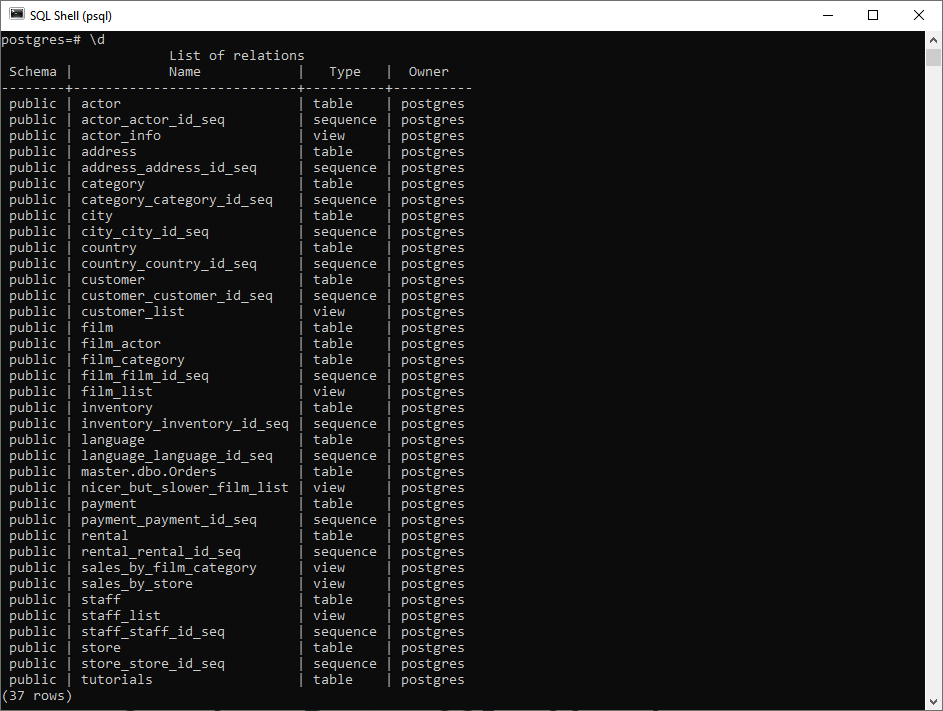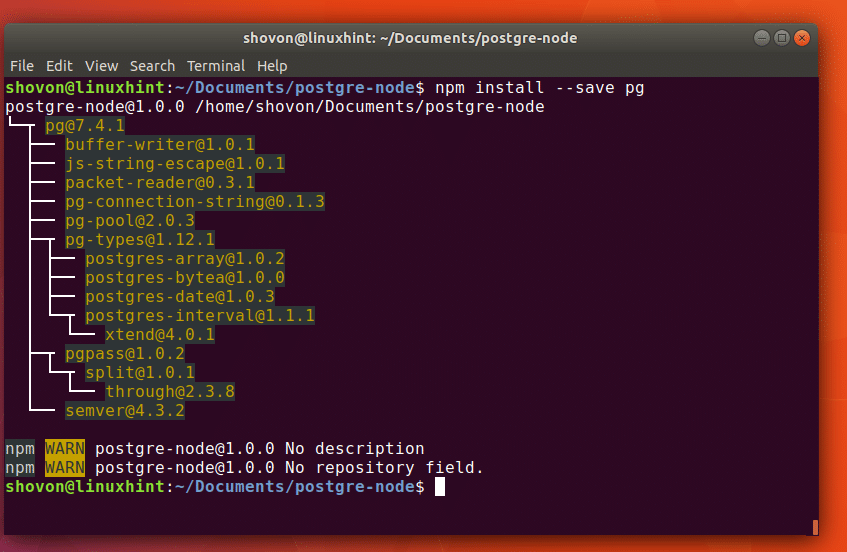

That’s all with the first method of removal. Restore your shared memory settings using this command: sudo rm /etc/nf.
#Postgresql command line mac password#
Go to System Preferences → Users & Groups → click the Lock icon and enter the administrator password to unlock settings → select the PostgreSQL and click the “-” icon. Remove the PostgreSQL folder from the system Library:.Unfortunately, the root uninstaller doesn’t delete all service files of the program, so you will need to remove them manually. Then follow the provided steps to remove the PostgreSQL and data folders. If the command runs the uninstaller, proceed to the next steps.Įnter the administrator password to launch the uninstaller. If you get the message that this file does not exist, then skip to the second PostgreSQL removal way. Sudo /Library/PostgreSQL/9.1/uninstall-postgresql.app/Contents/MacOS/installbuilder.sh Open /Library/PostgreSQL/9.2/uninstall-postgresql.app After that run the uninstaller using the following command: For this, go to the Applications folder, open Utilities subfolder, and launch Terminal.

If you installed Postgres with its Installer, then you can use the Terminal command line to remove Postgres.

For this, click on the Elephant icon in the toolbar and select Shutdown server To manage the complete Postgre uninstallation first of all, you should stop the Postgres server on your Mac. Meaning, they will not let you correctly reinstall the app in the future. In this case, all the Postgre system service files will remain on your computer and keep cluttering up your disk space. Deleting PostgreSQL just by dragging-and-dropping it into the Trash is not the correct way to uninstall apps.


 0 kommentar(er)
0 kommentar(er)
